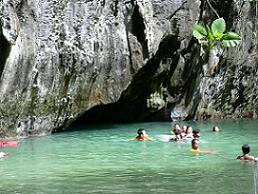
According to the Drowning Prevention Research Centre drowning rates for children five years of age and under are almost 20% higher in Ontario than the historic national average. In the majority of these cases the child was either alone near water, with a distracted supervisor or accompanied by another minor.
This summer if you plan to mix small children with a pool St. John's Ambulance officials suggest you make sure to take some safety precautions.
Supervise, supervise and supervise - Having an attentive adult supervisor on hand is critical when it comes to the safety of children in the pool. Preferably the adult will be in the pool with the kids, especially younger children. Children should never be left in a pool alone even if it is just for a minute. If your supervisor needs to leave the pool area it’s time for everyone to get out of the water for a break. Remember, only adults should be left in charge of children swimming.
Swimming lessons - It may seem like swimming lessons are too advanced for a child age five or under but there are many programs geared to this age group. Swim lessons improve confidence and technique and also help familiarize children with pool rules and safety. It is also a wonderful way for parents to better understand the ability of their child.
Safety gates - Make sure the pool has a gate that will prevent small children from falling in the pool. The gate should be self-closing/latching, at least 1.2m/4ft (depending on your municipality) high and discourage climbing.
Sound the alarm - On top of a reliable pool gate you should also invest in a good alarm system. Doors leading to the pool should be alarmed to sound if opened and underwater alarms in the pool can alert to someone falling in.
Use a Personal Floatation Device (PFD) - Young children should always wear a proper PFD like a lifejacket.
Avoid inflatables. Inflatable toys are fun and colourful but they can be a hazard for younger children who can get caught beneath them. Keep the pool free of toys while younger children swim and make sure to put them away when the pool is not in use. Children may be drawn to the toy and fall in the pool trying to retrieve it.
Be rescue ready - Set up a rescue station by your pool in case of emergency. Your rescue station should include a life preserver, a shepherd’s hook and a portable phone with the local emergency number programmed in.
Learn first aid & CPR - Knowing first aid and CPR ensures you are able to respond confidently if the worst happens. Parents/guardians should take a first aid and CPR class that includes child and infant resuscitation.


